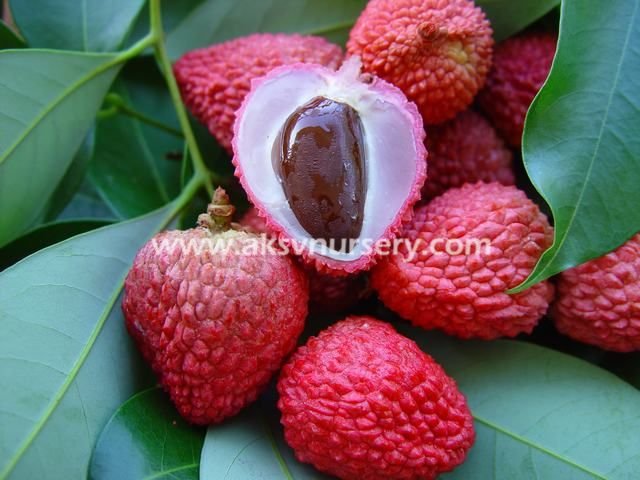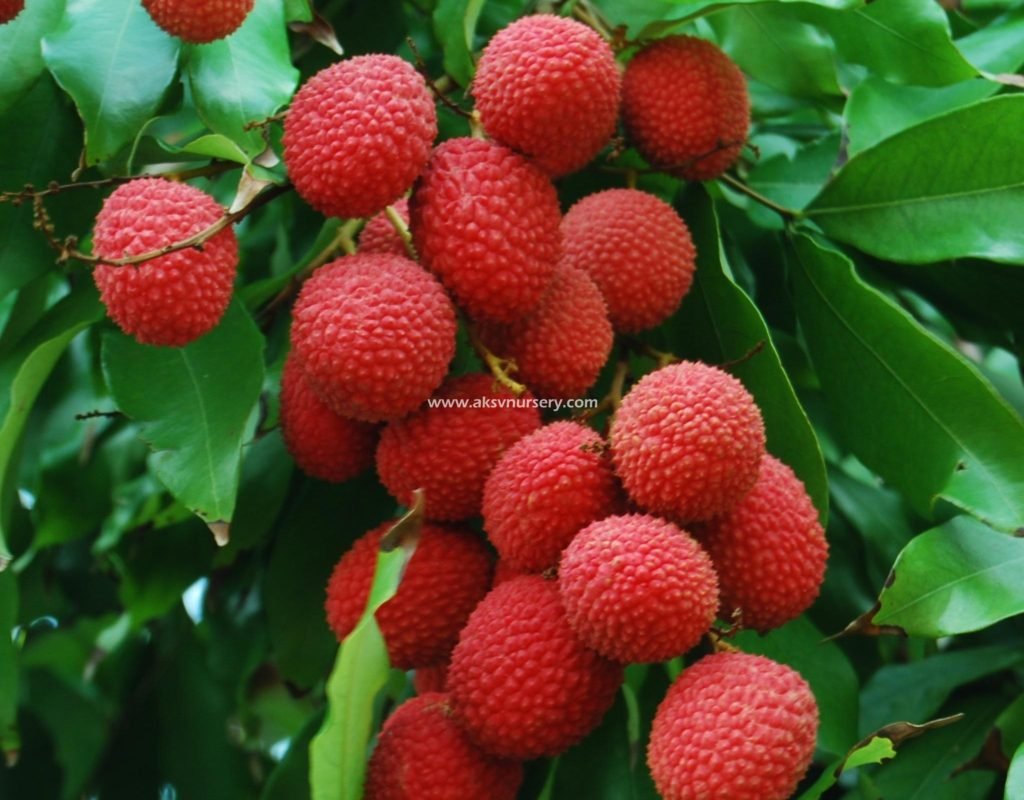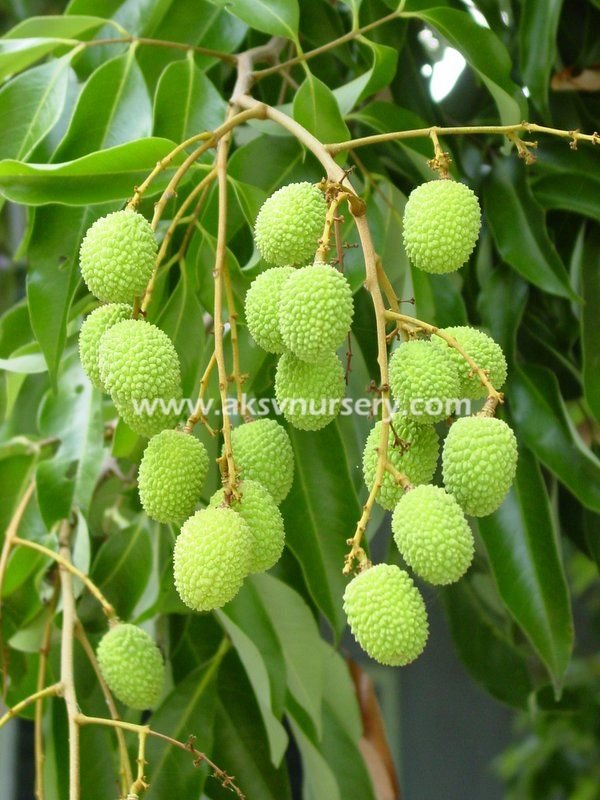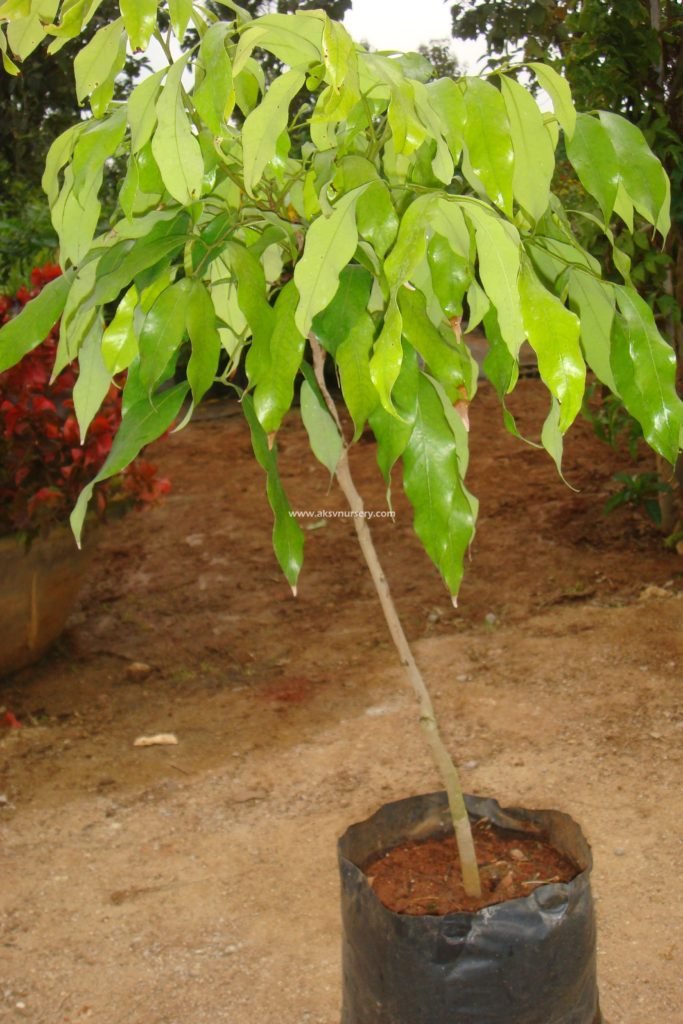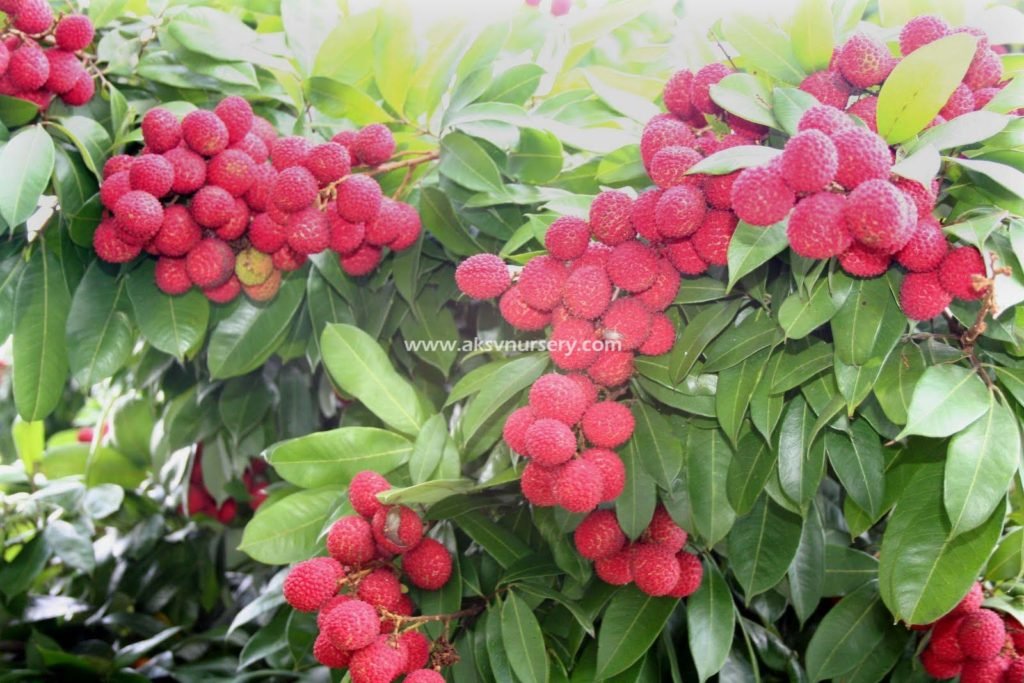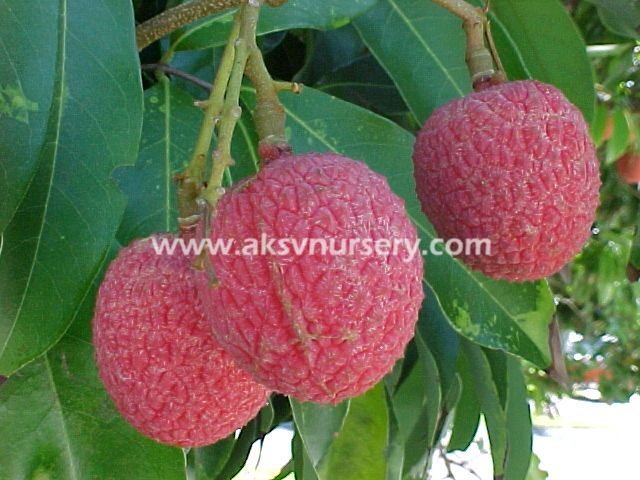Litchi chinensis, Nephelium litchi
Family: Sapindaceae
Lychee, Lichee
Origin: China
Slow growing, but reaching heights of 35′. It has attractive pinnate leaves of a shining leather texture. The fruit, when ripe, has dark red-brown and rough skin, is 1 to 2 inch long and grows in bunches. Under the brittle skin, the flesh is pearly white, sweet and jelly-like, though firm. It is eaten fresh or sun-dried (Litchi Nuts) or canned in syrup. It is a good source of vitamin C and phosphorous. Often called the best fruit in the world. You can’t argue with three billion Asians. You’ve eaten these no doubt in Chinese restaurants, where they’re served either within a dish (succulent and sweet) or dried (sweet and dry). Litchi has been cultivated for more than 2,000 years.
Lychee trees like regular watering; microelements applications are necessary to avoid chlorosis. For bearing-age trees, cut off all water and fertilizer by October. Stress caused by winter’s drought and cold is believed to induce heavier bloom.
Propagated by airlayering. Growing from seed is not successful method as seedlings usually do not survive long, requiring special mico-components in soil. This is why grafting is not very popular method either as getting a vigorous healthy rootstock seedling is problematic.
Litchi No Mai Chee (No Mi Ci, No Mai Tsz, No Mai Tsze). The best variety, smaller seed than Sweetheart, seed freestone.

